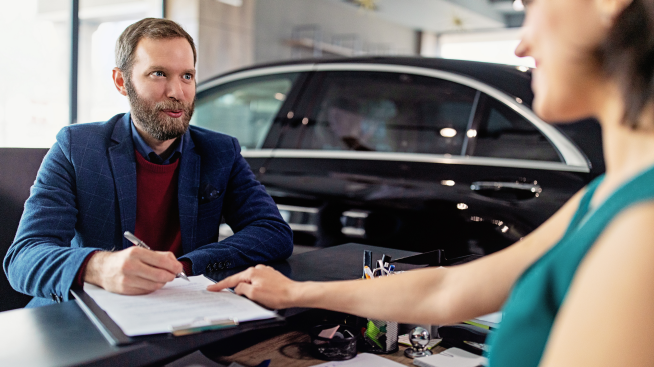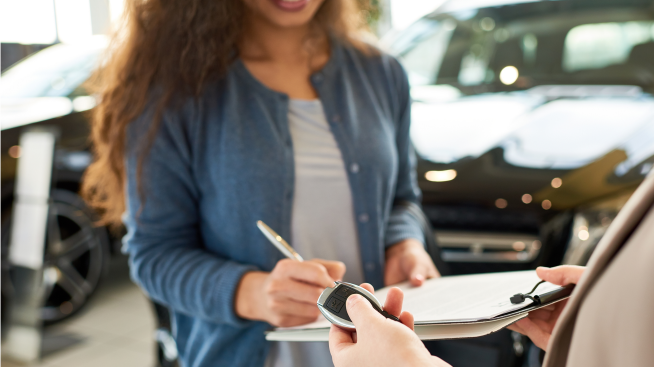Guide to returning a leased car

Leasing a vehicle means you enter into a contract to use that vehicle for a predetermined length of time in exchange for monthly payments. During this time, you are responsible for any maintenance or repairs that the car requires, although if the car is still covered by the manufacturer warranty, you will likely not pay for major repairs that may arise. Once the lease period is up, you may be wondering what happens when you return a leased car.
If you decide to return your leased car, you may be responsible for any excessive wear and use or damages that occurred over your lease period. Additionally, you may have to pay for exceeding the mileage limit and a disposition fee, if applicable. It's important to keep these things in mind over the course of your lease period in order to avoid potentially significant charges at the end. If you plan to get into a new lease, you can talk to your dealership or leasing company about any benefits that may be offered for staying loyal to the brand.
How do you return a leased car?
If you decide against buying your leased vehicle (if your lease contains a purchase option), you must return it at the end of your lease period. Returning a leased car is relatively straightforward, but you'll want to plan ahead and make sure you comply with all the requirements stated in your lease.
Typically, the return process begins around 90 days before your lease period is up. You can expect the dealership or leasing company to communicate with you around this time so you can start preparing. Your leasing company may reach out to you to schedule an inspection to take a look at your leased vehicle and determine whether there is excessive wear and tear or damage that you will have to cover. This inspection may look for, among other things, whether the car has:
- Dings, dents, scrapes, or scratches on the exterior.
- Stains, burns, tears, or rips on the interior.
- Cracks or pitting in the windshield, sunroof, or other windows.
- Tire wear.
- Missing or non-working equipment and other damage to the vehicle.
To assess your vehicle, the inspector will take note of any issues that are excessive according to your lessor’s standard for determining excess wear and use. Inspectors will usually document your vehicle’s condition in a report along with photos, factoring in measurements and the severity of the damages, in order to estimate the cost of the repairs. Once the inspection is complete, you'll likely receive a condition report outlining the damages identified by the inspector and the costs associated with them.
The next step in this process is contacting the originating dealership and/or the leasing company to determine the location you should return your vehicle to. Although your lessor may permit you to return your vehicle to any dealership of your vehicle's brand, you should contact your lessor for instructions and some dealerships require a lease return appointment to ensure it has the proper staff and space to accept your vehicle. Scheduling an appointment with your dealership for your lease return will help expedite the process.
What should you do before returning your leased car?
Now that you know how to return a leased car, it's important to address some concerns prior to the drop-off date. Since the inspection will determine the status of your vehicle and the charges you must cover, it's a good idea to prepare your leased vehicle ahead of time. Start by visiting your leasing company’s website for more information about the lease return process. If your leased vehicle exhibits signs of excessive wear and tear, you can proactively address these issues ahead of your inspection, if you choose. You should check with your leasing company prior to completing any repairs to ensure they meet requirements.
It's also a good idea to have your vehicle thoroughly cleaned, both on the outside and inside, to avoid unnecessary charges. You can opt to have your vehicle detailed so it makes a good impression. Addressing small touch-ups and thoroughly cleaning the vehicle may save you money on excess wear and use costs.
Next, confirm you have all of the items or extras that originally came with the vehicle. This can include the spare keys, cargo covers, spare tires, floor mats, manuals, and any other detachable or removable features. You’ll also want to remove any personal items inside or on the vehicle, including toll passes, documentation in the glove box, and any stickers. If you added any accessories, those should be removed unless doing so will cause damage to the vehicle. You should also delete any personal electronic information stored in the vehicle.
When the dealership accepts your vehicle, it will often provide you a receipt or ask you to sign an odometer statement attesting to the mileage. You will want to keep note of your return date and contact at the dealership in case it is requested by your leasing company. It’s a good idea to contact your leasing company and notify them of the location and date you returned the vehicle.



